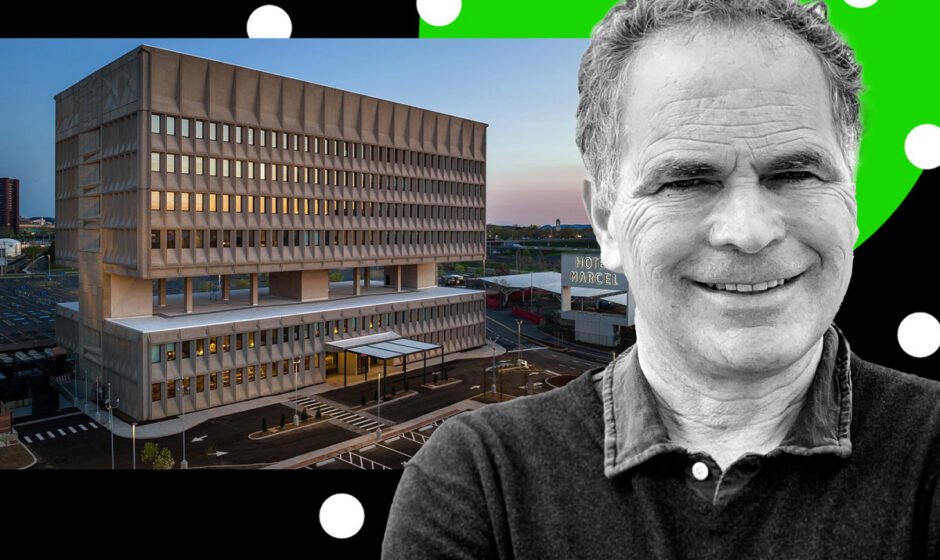Bruce Becker believes that building green is not only environmentally responsible but also a smart business decision. As the principal of Becker + Becker, he recently oversaw the transformation of New Haven’s Pirelli Building into the sustainably designed Hotel Marcel. This project made history by becoming America’s first Passive House-certified hotel.
Becker explained in an interview with Yale Insights that the decision to reduce emissions and avoid the use of natural gas and diesel-dependent components in the building has significantly lowered the hotel’s operating costs. Additionally, these sustainable choices have increased the overall value of the building. “We don’t have that larger energy bill to pay every year. We capitalize on that, making the building worth millions of dollars more than it otherwise would be,” Becker stated.
Becker acquired the nine-story Brutalist building at 500 Sargent Drive in New Haven in 2020. The building was originally designed by Marcel Breuer, a renowned figure in modern design and a protégé of Walter Gropius, the founder of the Bauhaus movement. Breuer also designed the original Whitney Museum on Madison Avenue, which is now home to the Frick.
Previously owned by the tire company Pirelli, the building served as the headquarters for Armstrong Rubber Company before being sold in 1988, according to CNN. Following Becker’s conversion, the Hotel Marcel now runs almost entirely on renewable energy. This achievement was made possible through the Passive House redesign, which significantly reduced the hotel’s electricity needs. As a result, Becker claims that the Hotel Marcel is in a better position compared to other similar hotels in terms of energy consumption. “A typical hotel in New England spends $15.50 per occupied room night on energy. We spend only about $5,” explained Becker.
The cost savings from reduced energy consumption allows for reinvestment in the property and the repayment of financing. Additionally, the Hotel Marcel benefits from Inflation Reduction Act tax credits for incorporating green building components and other public incentives for sustainable design. Becker emphasizes that choosing green practices is not only environmentally responsible but also more cost-effective. “This is actually the cheaper way to go,” he concluded.
In summary, Bruce Becker’s commitment to building green has resulted in the successful transformation of the Pirelli Building into the sustainable Hotel Marcel. By reducing emissions and utilizing renewable energy, Becker has not only lowered operating costs but also increased the value of the building. His innovative approach demonstrates that building green is not only good for the environment but also for business.




